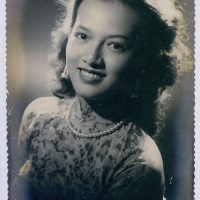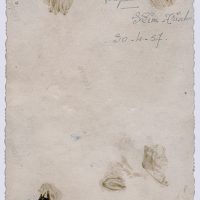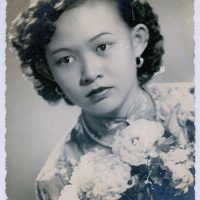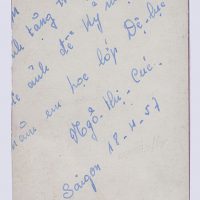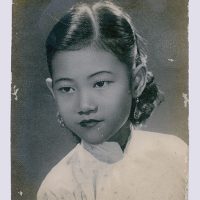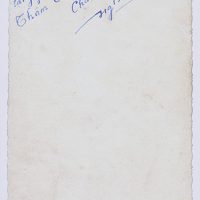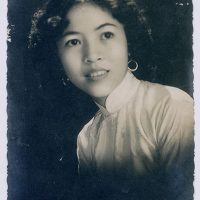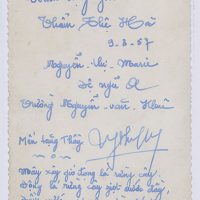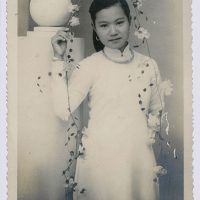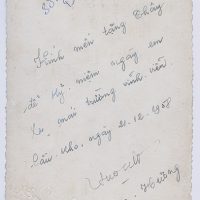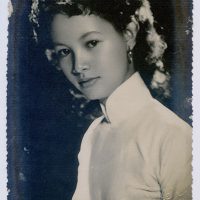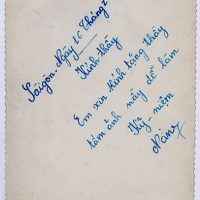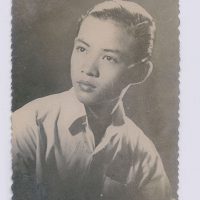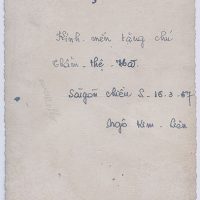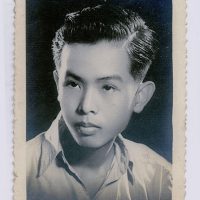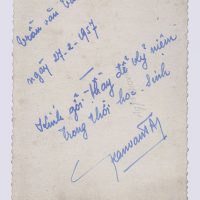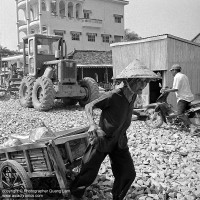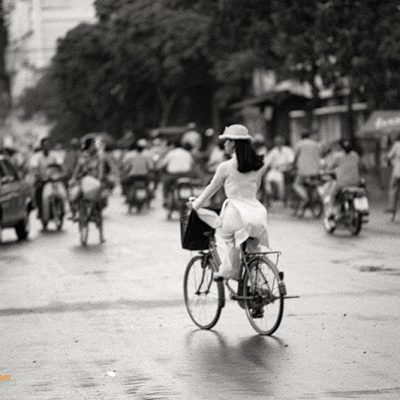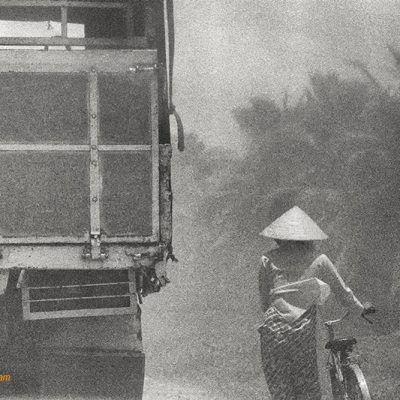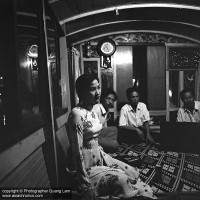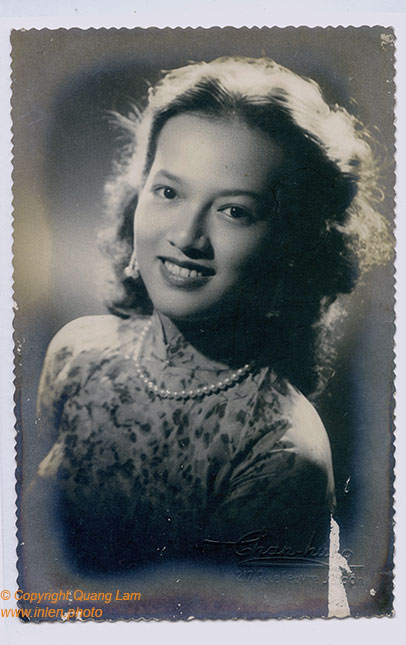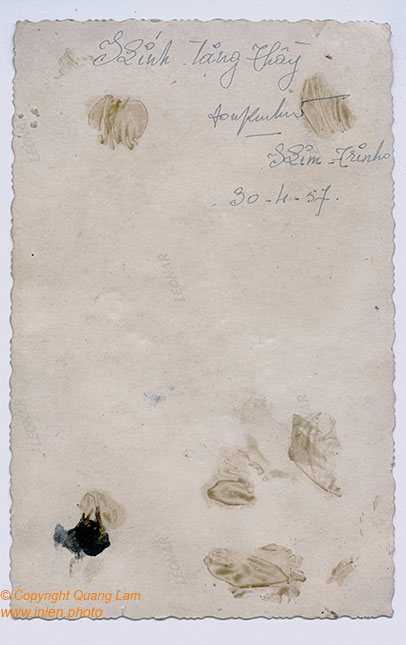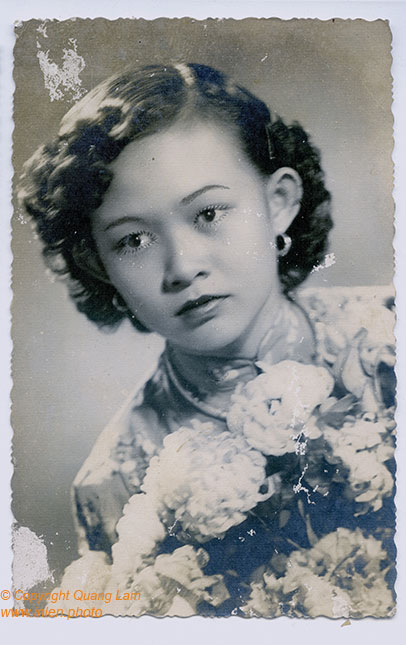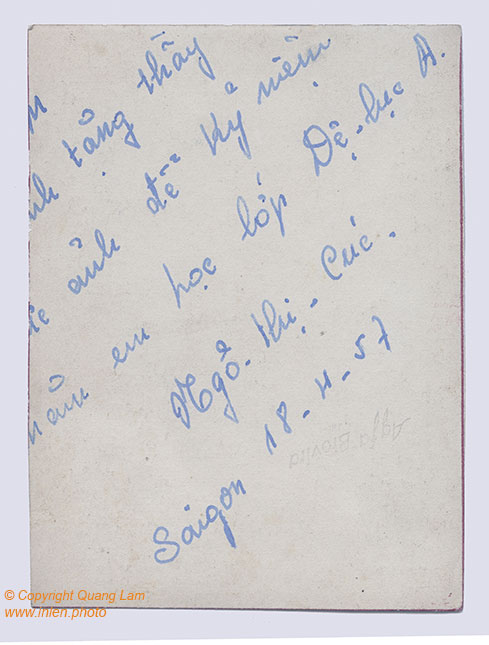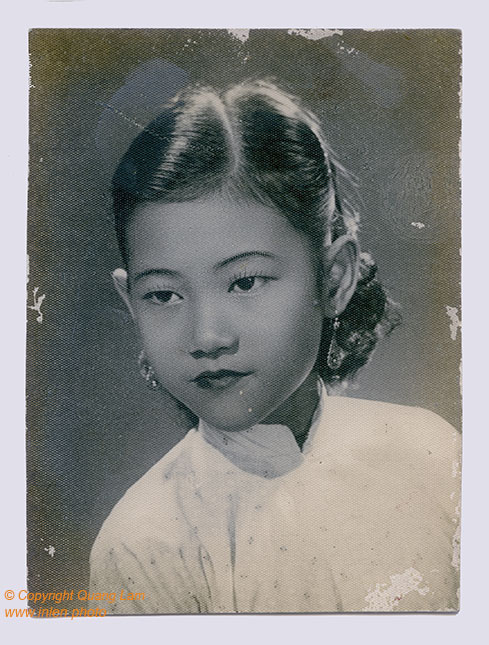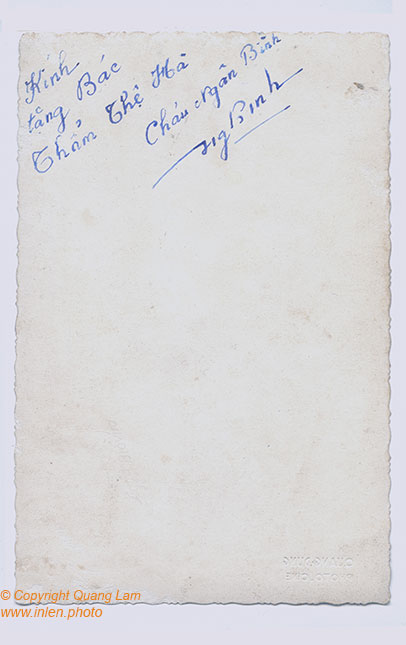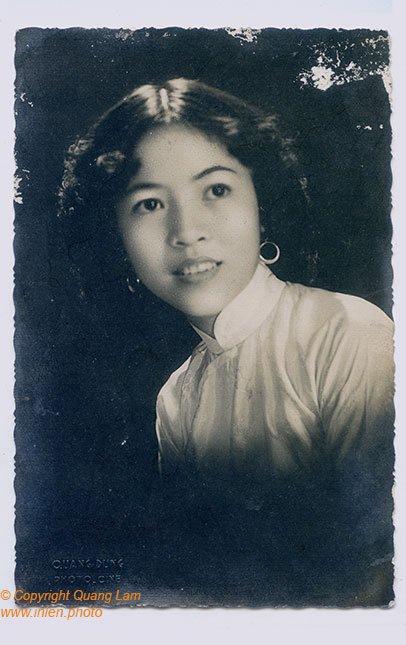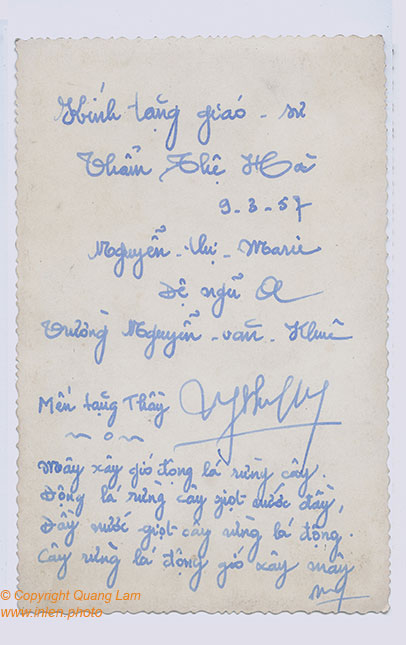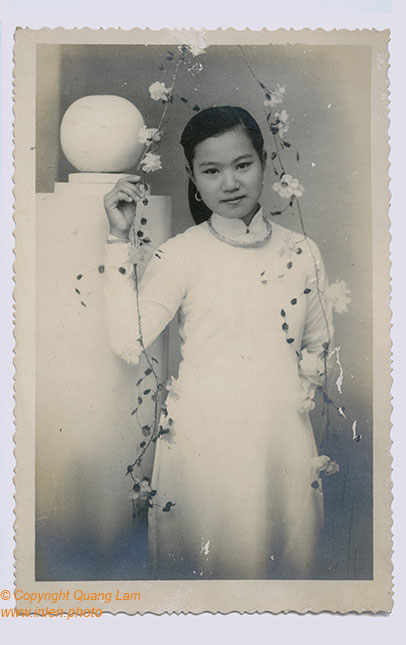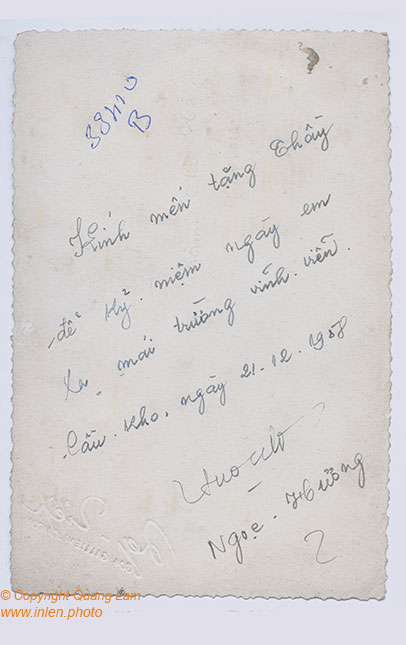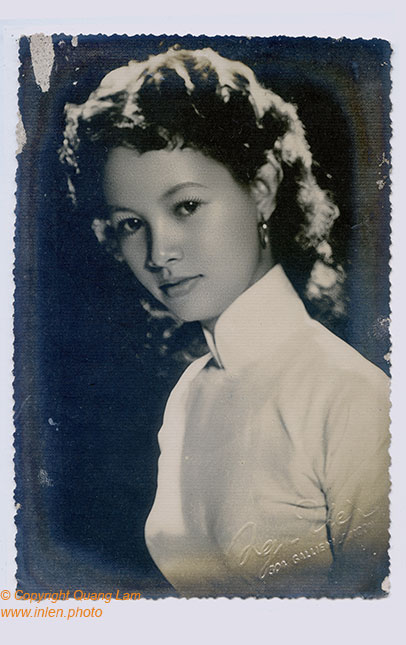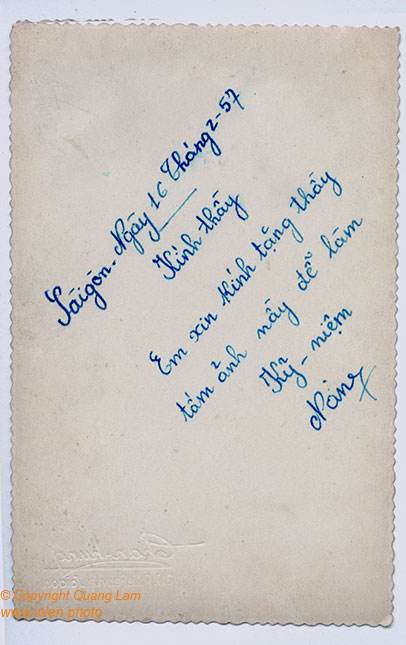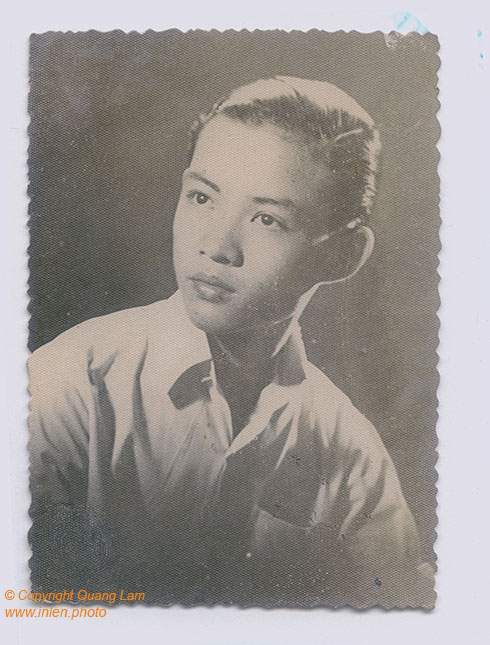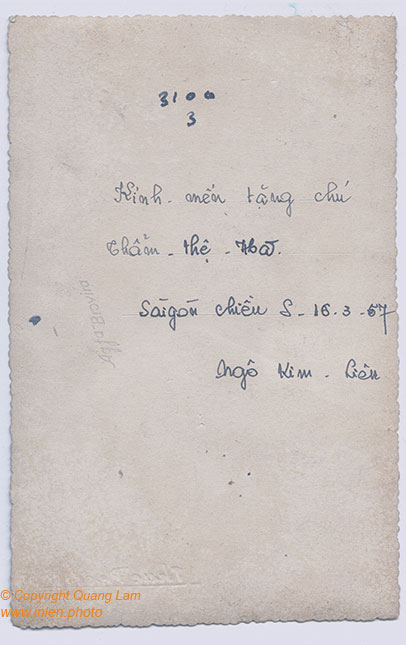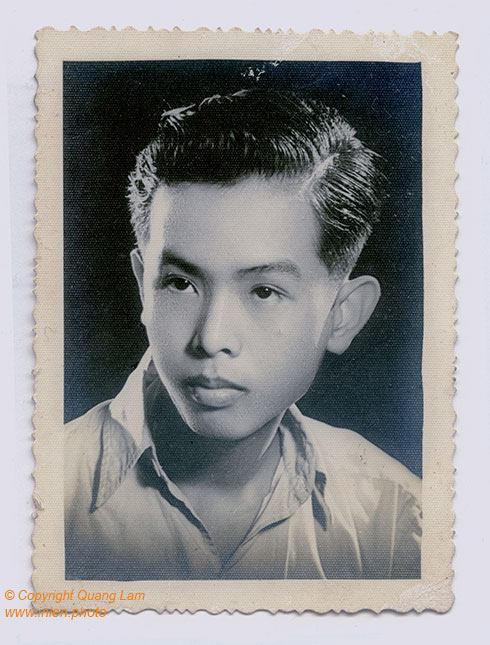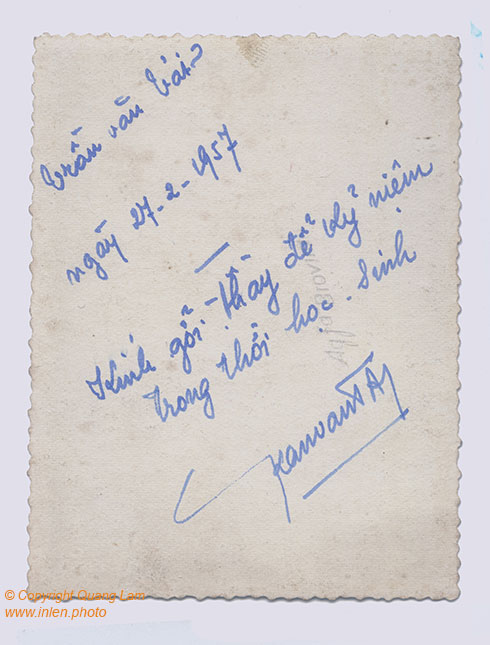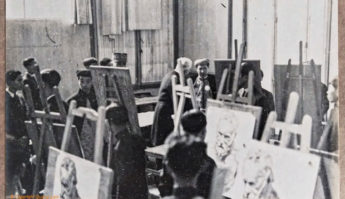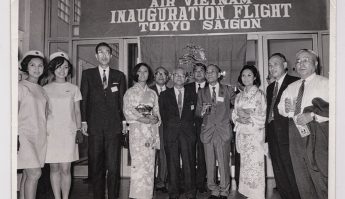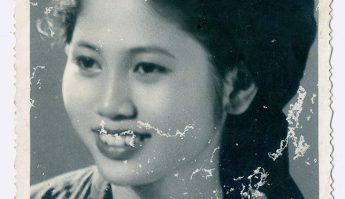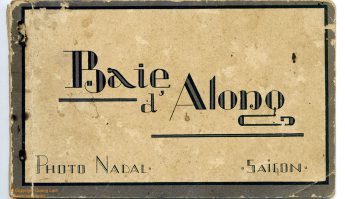Farewell portraits, a photographic practice, from the college Nguyen Van Khue in the 50s
The portraits in this collection were given by students to their professor at the end of their instruction in the 50s. The written words on the back primarily serve as a formal farewell and provide information about their names and the dates, allowing us to identify the individuals. Fortunately, within one specific portrait, the student also included the name of the Nguyen Van Khue School.
Professor Huỳnh Công Ân says : “From its inception in 1940, Nguyen Van Khue School stood as one of the largest private schools in Cochinchina during the French colonization period.
Lycéum Nguyen Van Khue, which translates to “high school” in Latin, is situated in District 2 (now known as District 1) on Nguyen Thai Hoc Avenue, close to Cau Muoi market. The school derives its name from its principal, who holds a bachelor’s degree in literature from the renowned Sorbonne University in France. Nguyen Van Khue School operates two distinct systems: the French program and the Vietnamese program. Students following the French program study in French, following the same curriculum as in France. Their exams are administered by the Mission Culturelle of the French embassy. The smallest class in this program is sixìèm moderne, equivalent to the seventh grade in the Vietnamese program (now 6th grade).
In the 1955-1956 school year, I studied in seventh grade C of the Vietnamese program, the boys’ class. I still remember that seventh class A consisted of all girls, including Ly Thi Quynh Nga, a school beauty, later the wife of opposition congressman Ly Quy Chung of the Second Cong Hoa period in the South.
In 1963, Mr. Nguyen Van Khue transferred ownership of the school to the Unified Buddhist Church of Vietnam, with Venerable Thich Quang Lien assuming the role of Principal and Director. On May 15, 1967, the school was officially established under the name: Bo De Private School.”
Indeed, these portraits hold profound significance in the realm of photographic practice. Firstly, they required a studio session with a professional photographer during their creation.. They carry memories that resonate not only for the givers but also for the professor who has preserved them throughout the years.
These portraits, with their invaluable information, offer us a glimpse into student life, its social rituals, and more than a traditional farewell from students to their professors, they serve as touching testimonials to the end of childhood.



